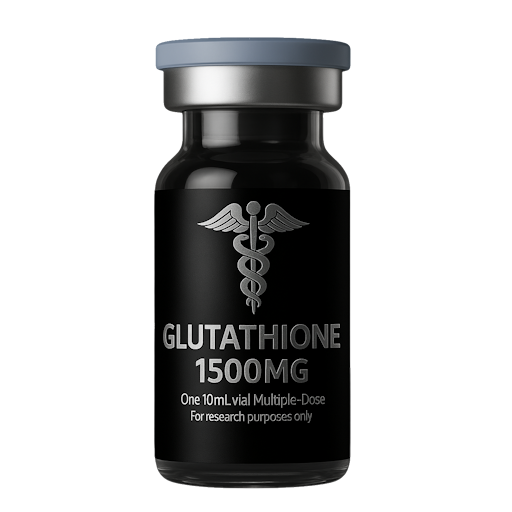Glutathione (GSH) is a tripeptide (γ-L-Glu-L-Cys-Gly) that serves as a central intracellular redox buffer and conjugating cofactor in xenobiotic clearance. In research settings, high-concentration GSH (1500 mg per container) supports investigation of oxidative stress responses, thiol–disulfide homeostasis, and phase II detoxification kinetics across hepatic, immune, and mitochondrial models.
Redox Cycling: Reduced GSH neutralizes reactive oxygen/nitrogen species and is oxidized to GSSG;
the GSH:GSSG ratio indexes cellular redox status.
Antioxidant Enzymes: Cofactor for glutathione peroxidases (GPx) and glutathione
S-transferases (GST), enabling peroxide reduction and electrophile conjugation.
Protein S-Glutathionylation: Reversible thiol modification that modulates enzyme activity and
signaling pathways under oxidative load.
Mitochondrial Role: Matrix GSH pool supports ETC integrity, limits lipid peroxidation, and
preserves membrane potential in stress paradigms.
Oxidative injury and redox biology • Phase II detoxification and electrophile clearance • Mitochondrial protection assays • Immune redox signaling and cytokine modulation • Hepatic metabolism and xenobiotic handling • Biomarker development using GSH:GSSG and GPx/GST activity indexes.
Revitalized Health compounds are produced under cGMP-aligned conditions with pharmaceutical-grade inputs. Each Glutathione lot is confirmed at ≥99% purity by HPLC with identity verified via LC-MS/MS. Lots undergo appearance/solubility checks and microbial/endotoxin screening to research-grade specifications. Batch-specific Certificates of Analysis document analytical methods, parameters, and results.
Store lyophilized material at 2–8 °C, protected from light and moisture. Following reconstitution with bacteriostatic water, maintain at 2–8 °C and utilize within 20 days. Avoid repeated freeze–thaw cycles to preserve thiol integrity and minimize oxidation to GSSG.
For laboratory research use only. Not intended for human consumption, therapeutic, or diagnostic use. Supplied exclusively to qualified professionals conducting controlled scientific studies.
Formulated for research applications. Purity, identity, and lot analytics available per batch. Not medical advice.
Identity: Reduced glutathione (GSH), a tripeptide (γ-Glu–Cys–Gly) supplied here at 1500 mg per dose for parenteral administration (clinic/compounding contexts).
Mode: Central intracellular redox buffer that donates electrons to glutathione peroxidases (detoxifying H₂O₂/lipid peroxides) and is regenerated by glutathione reductase; serves as a cysteine reservoir and a co-substrate for glutathione-S-transferases (xenobiotic conjugation). Transient IV bolus raises plasma GSH and shifts GSH:GSSG ratio; cellular uptake depends on γ-glutamyl cycle and transporters.
Analytics/QA: Identity & purity by HPLC/LC-MS; assay for reduced vs. oxidized fraction (GSH/GSSG); pH/osmolality; sterility (USP <71>), endotoxin (USP <85>); particulate (USP <788>); stability with oxygen control and light protection. PD readouts: whole-blood or PBMC GSH/GSSG, GPx activity, oxidative-stress markers (MDA/8-iso-PGF₂α), liver enzymes and bilirubin as applicable. Safety notes: monitor for flushing, nausea, cramping; sulfur odor possible; use caution in asthma history (rare bronchospasm with inhaled/IV use reported). Avoid disease-treatment claims on marketing pages.
Educational, research-style overview of parenteral glutathione. Not medical advice or a treatment claim.

